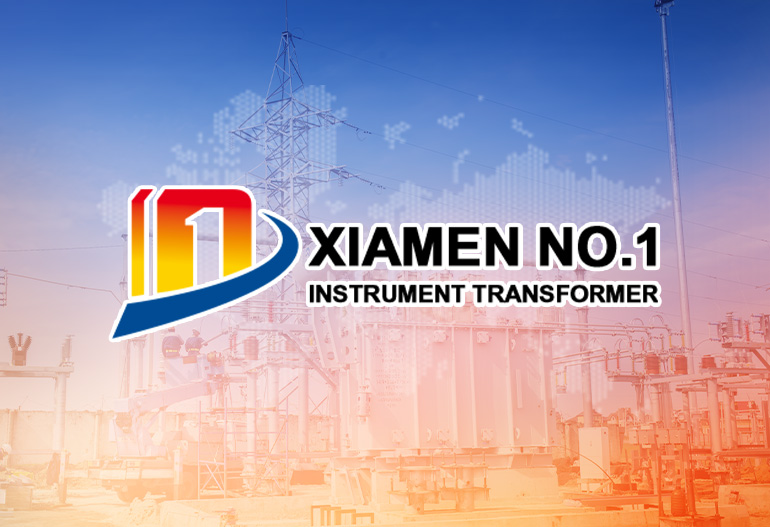
News
Anti-Interference Schemes for Current Transformers in Industrial Automation Production Lines
Anti-Interference Schemes for Current Transformers in Industrial Automation Production Lines
1. Introduction
2. Sources of Interference in Industrial Automation Production Lines
2.1 Electromagnetic Interference (EMI)
High - frequency switching devices: Variable frequency drives (VFDs) and power electronics modules generate high - frequency harmonics during operation. These harmonics can couple into CT secondary circuits through electromagnetic induction, causing measurement errors.
Large - power motors: When large - power motors start or stop, they produce transient electromagnetic fields. These fields can induce unwanted voltages in CT windings, affecting the normal current transformation process.
2.2 Radio - Frequency Interference (RFI)
Wireless communication devices: The widespread use of wireless communication technologies (such as Wi - Fi, Bluetooth, and industrial wireless networks) in automation lines can emit radio - frequency signals. If CTs are not properly shielded, these signals can interfere with the weak electrical signals in CT secondary circuits.
Radio - frequency identification (RFID) systems: RFID readers and antennas operating in the production line can also generate RFI, which may disrupt the normal operation of CTs.
2.3 Conducted Interference
Power line fluctuations: Voltage sags, swells, and transients on the power lines can cause conducted interference. These fluctuations can be coupled into CTs through the power supply circuits of associated equipment, leading to measurement inaccuracies.
Ground loops: In complex electrical systems, differences in ground potential between different parts of the circuit can form ground loops. Current flowing through these ground loops can introduce interference into CT secondary circuits.
3. Anti - Interference Schemes for Current Transformers
3.1 Shielding
CT housing shielding: CTs should be enclosed in metal housings with good electromagnetic shielding performance. Materials such as stainless steel or aluminum can effectively block external electromagnetic fields. The housing should be continuously welded or tightly screwed to ensure electrical continuity. For example, a CT with a stainless - steel housing can reduce the penetration of external electromagnetic fields by up to 90% in a typical industrial environment.
Cable shielding: The secondary cables of CTs must be shielded. Shielded cables, such as those with copper braid or foil shields, can prevent electromagnetic fields from coupling into the cables. The shield of the cable should be grounded at one end (preferably at the control room end) to form a Faraday cage effect. When using a copper - braided shielded cable, the shielding efficiency can reach over 85% for high - frequency interference.
Local shielding enclosures: In areas with strong interference sources, local shielding enclosures can be installed around CTs. These enclosures can be made of electromagnetic - shielding materials and are designed to isolate CTs from nearby interference sources, further enhancing the anti - interference ability.
3.2 Grounding
Proper CT grounding: The CT housing and secondary winding should be properly grounded. A dedicated grounding wire with low resistance should be used, and the grounding point should be as close as possible to the CT. The grounding resistance should be less than 1 ohm to ensure effective dissipation of induced charges and interference currents.
Single - point grounding of secondary circuits: To avoid ground loops, the secondary circuits of CTs should adopt a single - point grounding method. All secondary cables should be connected to a common grounding point in the control room, and no other grounding points should be allowed in the middle of the circuit. This can prevent the formation of circulating currents in the grounding system due to potential differences.
Isolation transformer and ground - fault protection: In some cases, an isolation transformer can be installed in the power supply circuit of CT - related equipment. This can effectively isolate the power - line - conducted interference. Additionally, ground - fault protection devices can be used to quickly detect and cut off the power supply in case of abnormal grounding conditions, protecting CTs from damage caused by excessive grounding currents.
3.3 Wiring Optimization
Separation of signal and power cables: CT secondary signal cables should be separated from power cables. A minimum separation distance of 30 cm is recommended. If crossing is necessary, the cables should cross at right angles to minimize electromagnetic coupling. This simple wiring measure can reduce interference coupling by up to 60%.
Twisted - pair wiring: For CT secondary cables, twisted - pair wiring can be used. Twisting the wires can reduce the electromagnetic induction area of the loop, thereby minimizing the induced interference voltage. The twist pitch should be optimized according to the frequency of the interference source; generally, a smaller twist pitch is more effective for high - frequency interference.
Cable routing management: In the production line, cable routing should be carefully planned. Cables should be laid in cable trays or conduits, and the routing should avoid areas with strong electromagnetic fields, such as near large - power motors and VFD cabinets.
3.4 Filtering and Signal Processing
Electromagnetic interference (EMI) filters: EMI filters can be installed at the input and output ends of CT secondary circuits. These filters can suppress high - frequency interference signals while allowing the normal power - frequency current signals to pass through. For example, a common - mode choke in an EMI filter can effectively suppress common - mode interference in the CT secondary circuit.
Signal amplification and filtering circuits: In the control system, signal amplification and filtering circuits can be designed. Low - pass filters can be used to remove high - frequency noise from the CT output signals. Additionally, operational amplifiers with high - common - mode rejection ratio (CMRR) can be used to amplify the weak CT signals while suppressing common - mode interference.
Digital signal processing (DSP) techniques: In modern automation systems, DSP - based signal processing methods can be applied. Digital filters can be designed to precisely filter out interference components according to the characteristics of the interference signals. Moreover, algorithms such as fast Fourier transform (FFT) can be used to analyze the frequency components of the signals, enabling real - time detection and suppression of interference.
3.5 Selection of High - Performance CTs
High - common - mode rejection ratio: When selecting CTs, models with high - common - mode rejection ratio should be preferred. These CTs can effectively suppress common - mode interference signals, ensuring the accuracy of differential - mode (useful) signal measurement. CTs with a CMRR of more than 80 dB are suitable for most industrial automation environments.
Low - magnetic - field - sensitivity: CTs with low - magnetic - field - sensitivity are less affected by external magnetic fields. Special materials and winding structures can be used in these CTs to reduce the influence of external magnetic interference on the CT's performance.
Wide - frequency - response characteristics: In industrial automation lines with complex frequency - component interference, CTs with wide - frequency - response characteristics can accurately measure current signals within a wide frequency range while suppressing out - of - band interference.
4. Conclusion

XUJIA
I graduated from the University of Electronic Science and Technology, majoring in electric power engineering, proficient in high-voltage and low-voltage power transmission and transformation, smart grid and new energy grid-connected technology applications. With twenty years of experience in the electric power industry, I have rich experience in electric power design and construction inspection, and welcome technical discussions.

